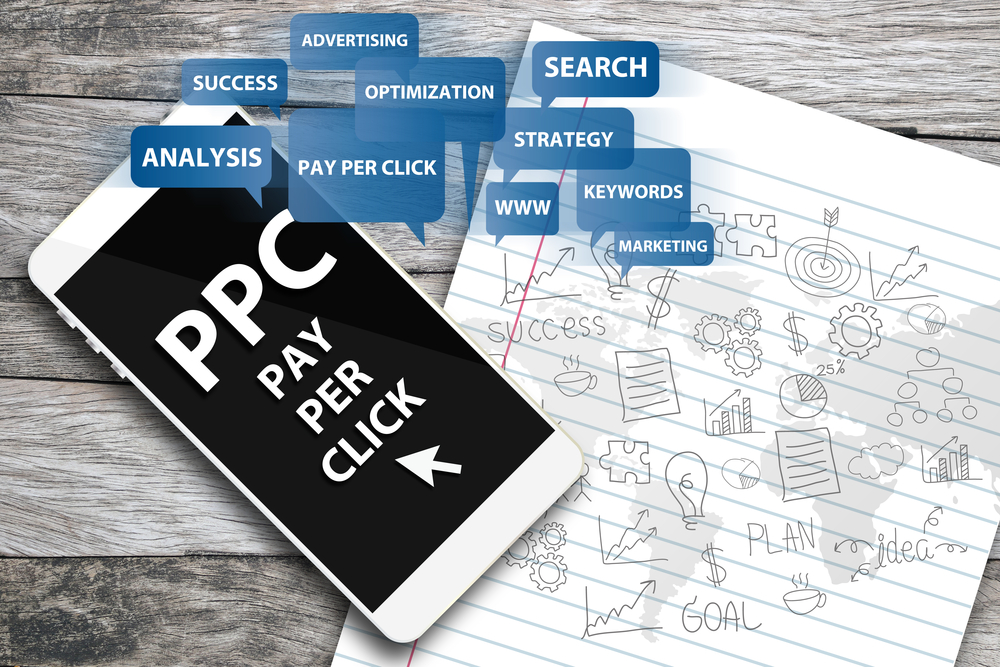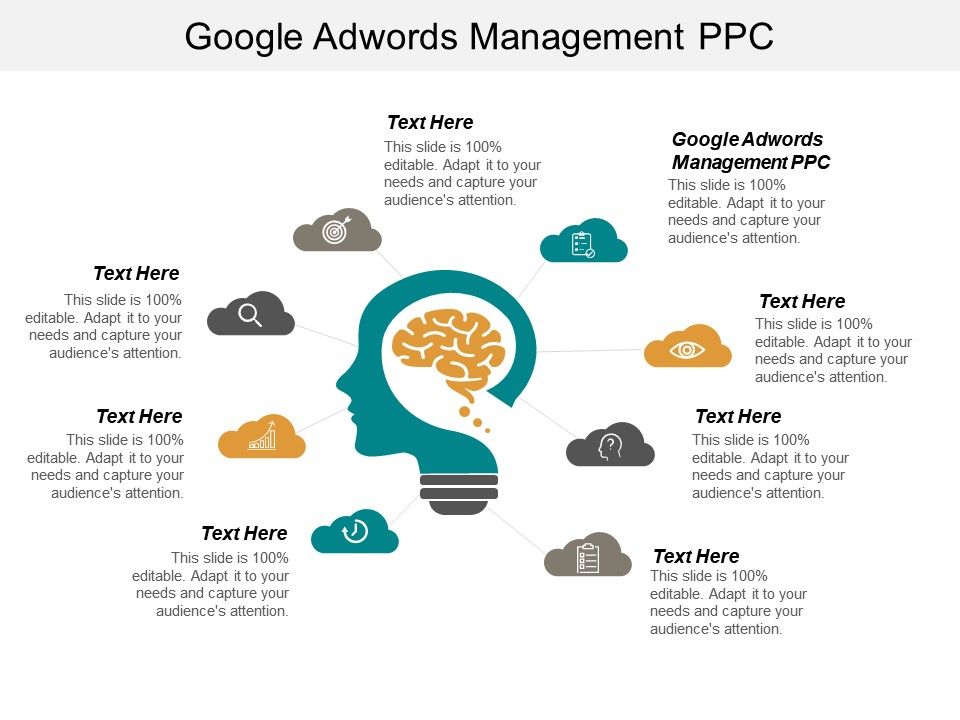There are different types of PPC ads, but one in every of the foremost common types is that the paid search ad. These ads appear when people rummage around for things online employing a program like Google – especially after they are performing commercial searches, meaning that they are trying to find something to shop for. this might be anything from a mobile search to a neighborhood service search.
All of those searches trigger pay-per-click ads. In pay-per-click advertising, businesses running ads are only charged when a user clicks on their ad, hence the name “pay-per-click.” Other kinds of PPC advertising include display advertising (typically, serving banner ads) and remarketing.
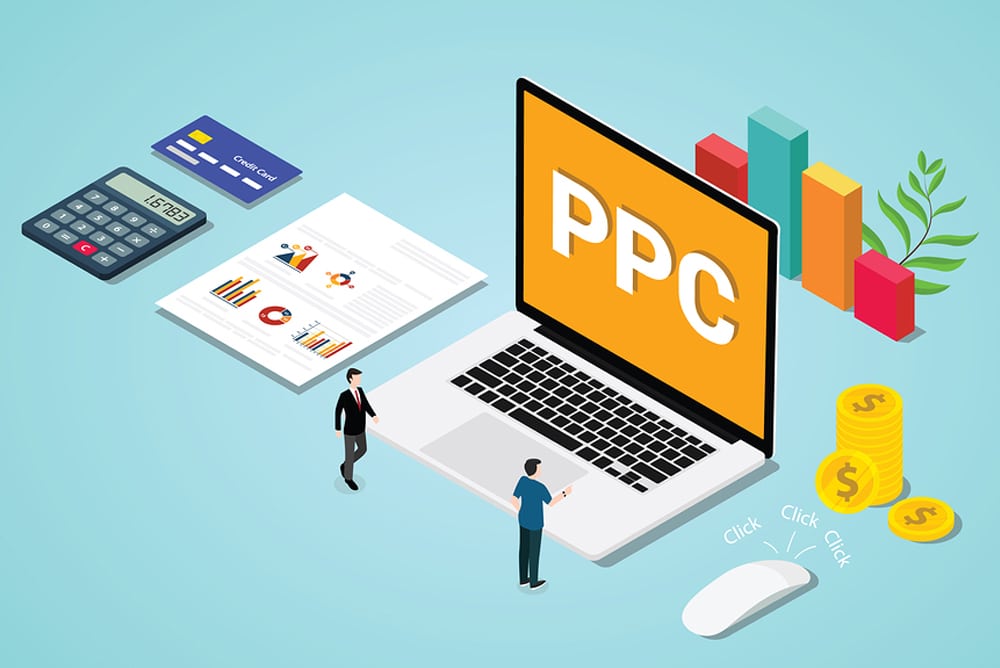
How Does Pay-Per-Click Advertising Work?
For ads to look alongside the results on a quest engine (commonly brought up as a probe Engine Results Page, or SERP), advertisers cannot simply pay more to make sure that their ads appear more prominently than their competitor’s ads.
Instead, ads are subject to what’s called the Ad Auction, a wholly automated process that Google and other major search engines use to see the relevance and validity of advertisements that appear on their SERPs.
Need help along with your PPC ad campaigns?
Try our free, beginner’s guide to Google Ads. How Keywords add Pay-Per-Click Advertising.
This implies that advertisers must bid on the terms they require to “trigger,” or display, their ads. These terms are called keywords. Say, as an example, that your business makes a specialty of camping equipment. A user desirous to purchase a brand new tent, bag, or portable stove might enter the keyword “camping equipment” into a probe engine to search out retailers offering these things. Pay per click advertising example SERP At the instant the user submits their search query, the computer program performs the complex algorithmic calculations that the Ad Auction relies upon. This determines which ads are displayed, within which order, and by which advertiser. Since you’ve got to pay money for each click on your ads, it’s imperative to only bid on keywords that are relevant to your business, so you’ll be able to take care to induce ROI from your ad spend.
A keyword tool can facilitate your find the correct keywords to bid on it are both likely to drive sales or conversions, and aren’t prohibitively expensive.
1. Choose the proper Bid Strategy
First and foremost, the bid strategy is what lays the groundwork for your entire campaign. Therefore, it must be chosen wisely. Start by defining your goals.
- Are you mainly inquisitive about increasing your website traffic?
- Getting people to require action on your platform?
- Boosting your brand awareness?
- All of the above?
- AdWords provides a variety of bidding strategies to assist accommodate your needs.
Conversion-Based Strategies: Target Cost Per Acquisition (CPA) – This one is supposed for those simply looking to extend their website conversions. Using this approach, you’ll be able to base your campaign around a selected CPA. Target Return On Ad Spend (ROAS) – Also designed for reinforcing conversions, this strategy is supposed to be created around a particular ROAS.
Maximize conversions – The name just about says it all with this strategy. If your sole focus is gaining the foremost conversions, you’ll be able to simply bid on this factor alone. Enhanced Cost-Per-Click (ECPC) – to urge a small amount more streamlined, this strategy is an optional feature that automatically adjusts your bids to realize as many conversions as possible.
Cost Per Thousands Viewable Impressions (vCPM) – This one could be a manual bidding strategy. If your ads are primarily designed for increasing brand awareness, and not most for clicks or traffic. you’ll be able to set the most amount you’ll purchase every 1000 impressions.
If you have got a goal that involves a direct response from customers, this strategy is maybe not for you. Click-Based Strategies: Maximize Clicks – This strategy is probably the best thanks to bidding for clicks. The automated system requires you to line a daily budget, then it manages your bids to bring you the foremost clicks. Manual Cost Per Click (CPC) – This strategy allows you to manage your clicks independently. you’ll select bids supported by each ad group within your campaign, or few specific keywords. Views or interaction-based Cost Per View Bidding (CPV) – This strategy is supposed for video ads. you merely enter the highest price you wish to procure each view or the other type of video interaction. Take it slow in choosing your bid strategy. If your goals are murky stepping into, it’ll be much harder to pinpoint the correct approach and see the results you wish.
One of the foremost important things to stay in mind is that if you’re directing users to a landing page, that page MUST be mobile-friendly. A recent survey found that 42% of consumers won’t convert to a poorly designed website. If your mobile landing pages are ill-conceived, you’re fighting an uphill battle.
2. Apply Bid Adjustments This concept is comparatively easy to know.
Together with your market knowledge, you’ll be able to change the share of a bid. For instance, if most of your audience is searching on mobile, you’ll be able to increase your bid for when people conduct exploration on their device. increase your bid for when people conduct a look at their device While this task is easy, making the right adjustments is a particularly important task in your marketing mix. take care you’re reading your reports correctly to create effective decisions. the most goal is to seek out the places where conversions are the simplest. Then make the right bid adjustments to match. As time goes on, you’ll be able to refine your PPC spend.
3. Optimize Bids to attain the most effective Ad Position
Optimizing your bids and ad positioning could be a constant task you ought to be working towards throughout your entire PPC campaign. Doing so successfully can require a good deal of your time and shut attention to detail. Keeping tabs on your performance and analytics should be a daily routine to search out the most effective ways to form each dollar go farther. Be sure you stay faithful to the most goals you previously established for your campaign. detain mind, there’s no one-size-fits-all strategy for successful bidding.
Manual – the foremost basic method for managing bids. Here, you’ll be able to either add or subtract simple bids supported “if” or “then” logic to achieve a specified number of clicks, conversions, or retargeting objectives. This strategy can get tedious with the more keywords you employ. Algorithmic – this can be more advanced and combines the weather of control and automation. Given this state of selling, this is often the well-liked option. It takes all the fundamental factors you’d use in manual optimization while incorporating more in-depth business factors like budgetary needs, constraints, and long-term/short-term goals. This process could be a never-ending part of your PPC efforts.
4. Use Single Keyword Ad Groups are, you guessed it, ad groups containing only one keyword.
The likelihood is, you have already got an honest circle of keywords in your groups. Google recommends you have got 10-20. The tough part about this is often creating a decent ad relevant to every. If you’re struggling, your Quality Score can suffer. With one keyword ad group, there’s just one term of which might trigger a poster. This way, you shouldn’t work extra hard to form ambiguous ads that have to apply to a mess of keywords. Doing so will provide you with an improved chance of improving your quality score. the upper you rank, the lower your cost-per-click. Now, you don’t want to place EVERY single keyword into one ad group, as this can take away an excessive amount of time. take care and prioritize. Once you’ve got pinpointed your most dear terms, it’ll be much easier to form meaningful ads relevant to your keywords.
5. Use DKI to enhance CTR Dynamic Keyword Insertion (DKI) could be a fantastic thanks to improving your click-through-rate (CTR).
The result, your ad is now closely associated with the search query. This is a good strategy to enhance your results and help people find what they have. Just make sure nothing is misspelled and your keywords aren’t too broad!
6. A/B Test Your Ads and Landing Pages Digital marketing generally may be a constant game of testing and optimizing.
PPC ads aren’t any exception. Performing these tests provide you with a thought of what’s working well, and what may be scrapped. Luckily, the method of A/B testing variants in PPC is sometimes easier than other types of split testing. But, it doesn’t mean you must take this task lightly. Typically, there are four major areas during which you must be testing your copy. Headline Body Link Keywords on ad display Throughout your tests, explore for patterns in how certain keywords are more practical in terms of CTR, conversions, raising awareness, etc. Some may well be great for one component, but horrendous in other areas. This just means some words are working on numerous levels of the buyer’s journey. This doesn’t mean one is more valuable than another. they’re simply serving different functions. The more you test, the higher bank of keywords you’ll have for your campaigns.
7. Use Ad Extensions
The primary function of ad extensions is to convey people more information about your business to assist them to make a choice.
These are typically known to spice up CTR. Extensions include things like the number, address, links to landing pages, and more. These extensions give your ads more visibility on the SERPS, which implies more value. Setting them up is usually a manual task. However, AdWords will sometimes show ad extensions automatically, if it thinks your performance can enjoy them. Keep in mind, just adding an extension doesn’t guarantee it’ll show on the ad. Your ad rank must meet specific criteria and therefore the extension must provide value.
8. Select the foremost Valuable Keywords
While this one seems obvious, it’s roughly as easy because it sounds. The most important thing to stay in mind is you don’t want to grab for the highest shelf, not yet a minimum of. These terms are usually costly and highly competitive. Don’t go too broad. explore for those performing best within your niche audience. Selecting the simplest keywords takes finesse. In other words, they must be effective, but not too effective to the purpose where a user enters the term and a plethora of comparable ads will appear before yours. Also, make sure you’re using ones for every stage of the customer journey.
- What would people be searching for after they are casually researching about your business?
- What about once they are getting down to get serious in narrowing down their options?
- Validating their decision?
- Finding the proper balance of terms is one in every of the foremost vital elements in your strategy.
9. Pause Under-Performing Keywords and Match Types On the flip side
An honest piece of recommendation to stay in mind with keywords isn’t to fall crazy.
If the numbers are under you’d like in terms of CTR, conversions, or impressions, it may be extremely easy to pause without hesitation. However, there are some things to contemplate before pulling the trigger.
Pause Under-Performing Keywords and Match Types in Adwords Second, examine positioning. If you’re paying top dollar for a keyword-triggered ad to be positioned at the highest of the list and it’s unprofitable, it would be an informed attempt to move it down a pair spots. Sometimes, people tend to miss the ads at the very top of a page. Third, consider your ad group structure. Some keywords can trigger ads completely irrelevant to your business. for instance, you may bid on a keyword like “leather shoes,” but it prompts an advertisement that mentions something completely different, like “cow leather.” These combinations don’t have any chance of success. If this can be the case, return, and re-evaluate your ad groups and make ones that are more niche-focused. Fourth, choose keyword match types that supported your objectives. It’s best, to begin with, either exact match or phrase match keywords. I prefer the Phrase Match. Once you retrieve at AdWords and gain confidence in identifying search patterns of your customers, start using the Broad Match Modifier, which can facilitate your increase in the reach of your campaigns. At the identical time, keep eye on your search terms data and add negative keywords into specific ad groups or campaigns to eliminate waste of selling dollars.
10. Build a Negative Keyword List
Negative keywords essentially instruct the search engines to NOT show ads for sure terms.
This way, you’ll designate which kinds of searches trigger your ads. For example, if you strictly sell high-end wooden furniture, many potential searches may result in fruitless results. Terms like cheap, free, old, restored, etc. won’t be relevant to your business goals. Therefore, it’s best to feature those to your negative keyword list. There are many benefits to the current tactic. For one, it helps you steer the foremost interested customers in the right direction. Two, it weeds out irrelevant traffic, saving you time and money within the long term. Three, if you’ve got multiple PPC campaigns going without delay, using negative keywords can help avoid cross-promotional matches. For some assistance during this area.
11. keep it up Experimenting Big data
It is quickly becoming one of the foremost valuable resources within the world. Businesses are now able to use it for creating more accurate and educated decisions. With most information out there, the trick is finding the correct metrics to mine and glean insights to enhance future performance. When gazing at any type of digital marketing, you want to approach the task with the mindset that your strategy is an ever-evolving entity. there’ll always be new trends and consumer preferences emerging and dying by the hour. the most effective thanks to navigating the constantly-shifting landscape is to urge your hands dirty and experiment. In terms of PPC, don’t be afraid to require risks. Think outside the box. True, a number of your attempts are going to be duds. But within the process, you’ll learn what works and what doesn’t. Use your past experiences and results to produce the grounds for your next plan of attack. you’ll even find something completely revolutionary!
12. PPC advertising will facilitate your forced entry to new markets.
PPC advertising is the perfect tool to drive exposure for brand new products and services. you’ll drive immediate traffic to your website to market your new offerings.
13. PPC advertising is real-time A major advantage of PPC advertising is that the real-time nature of it.
You’ll observe your results in real-time. And, if you’re not proud of the results, you’ll be able to make adjustments to your campaign immediately to form adjustments. This is simply unattainable with other varieties of advertising.
You’ll need to bite the bullet and take the loss. PPC advertising can facilitate your cut your losses immediately and make adjustments to achieve more conversions.
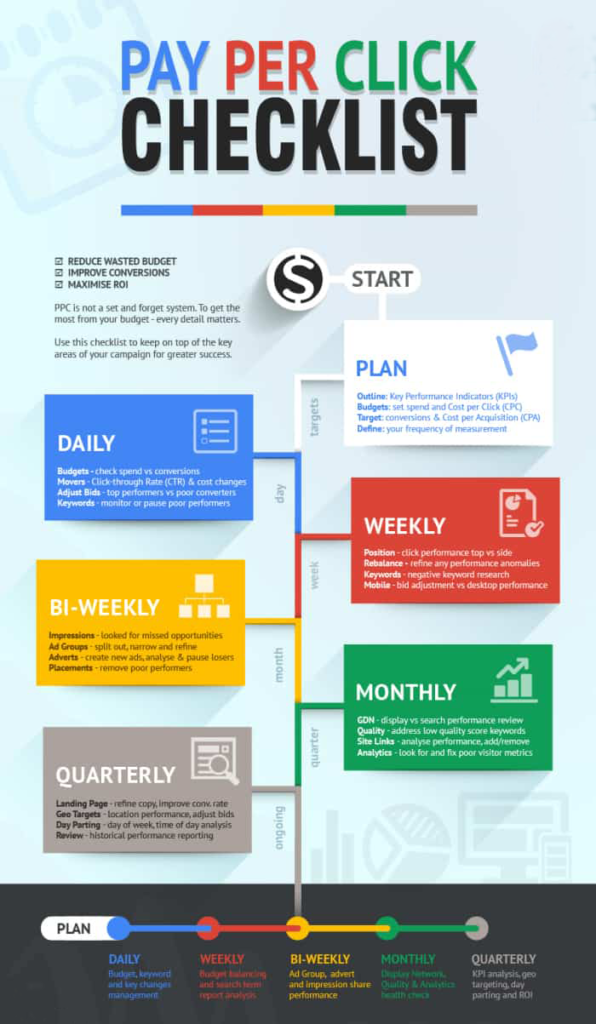
14. PPC advertising spend is controllable
When it involves setting an advertising budget, the ball is in your court. With PPC advertising, you set your budget. you’ll be able to easily increase your budget or decrease it. PPC advertising allows you’ve got complete control of the destiny of your movement. However, sometimes this discretion can come to haunt you. If you underspend, you will not get enough exposure to spending. If you overspend on the incorrect crusade, you’ll waste thousands of dollars. Use a PPC management service to avoid wasting your money and time to realize more sales.
15. You simply pay when someone clicks on your PPC advertisement
The good thing about PPC is that you just only obtain actions. this suggests that if you run a commercial that reaches 10,000 people, but nobody clicks it, you are doing not must pay a dime. additionally, as you begin to determine conversions, you’ll be able to found your campaign to where you merely procure conversions. you simply acquire results. this is often an enormous benefit to PPC advertisers!
16. PPC advertising has testing capabilities With PPC advertising, you’ll test various keywords and advertisements.
You’ll A/B split test your advertisements to work out which can drive the foremost results. A/B split testing is the process of running multiple advertisements with small variations. The goal is to see which combination works the simplest for your business. the power to check your advertisements will facilitate your maximize your PPC advertising spend.
17. PPC advertising can facilitate your attract talent
You can acquire talent through PPC advertising. When job seekers look for opportunities on Google, you’ll be able to run a paid advertisement that attracts them to your business.
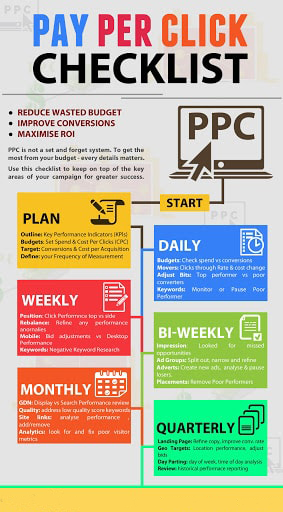
18. PPC Advertising is that the best decision you’ll be able to make If you’re looking to grow fast
You would like to take a position in paid search marketing so you’ll be able to reap the advantages of PPC advertising. you’re missing out on potential clicks, leads, and sales a day you’re not within the search engines. Your customers are using it immediately. And, your competitors are using it to maximize it.
Do you still have questions on PPC advertising?
No worries! We’d be happy to answer them! Just leave your questions within the comments below.
Conclusion
When PPC is dole out correctly, it’s an enormous investment for your business, which may have a variety of returns. So why not consider integrating PPC into your marketing strategy, make sure you capture your potential perfect customer at the correct time, and gain those important results!


